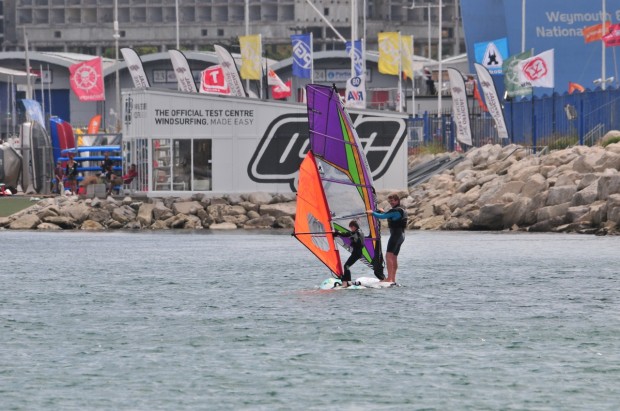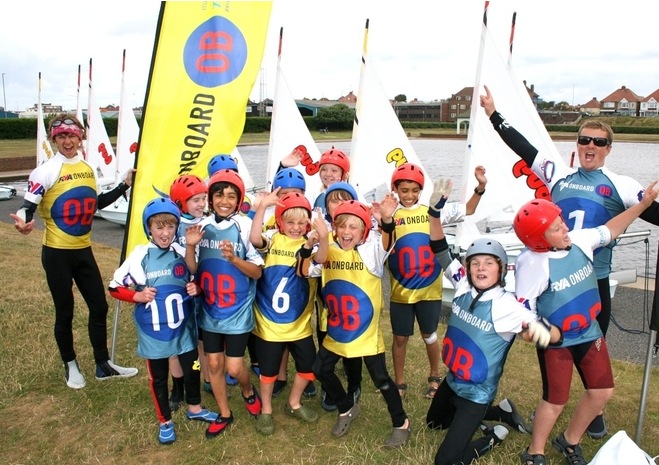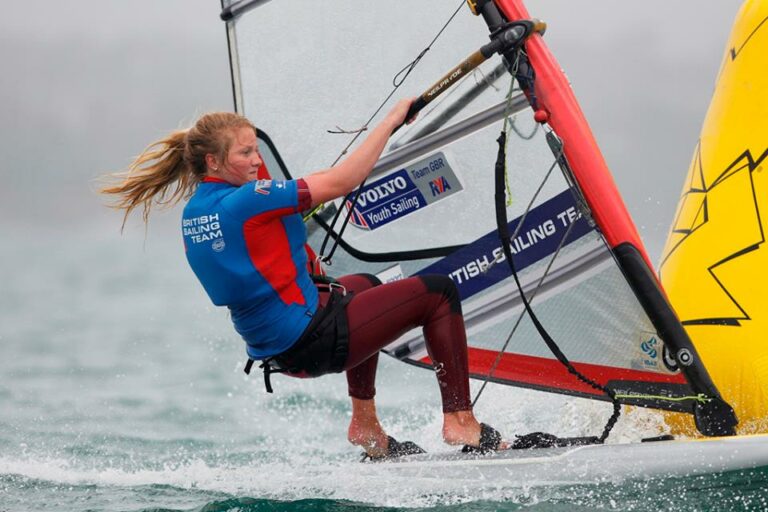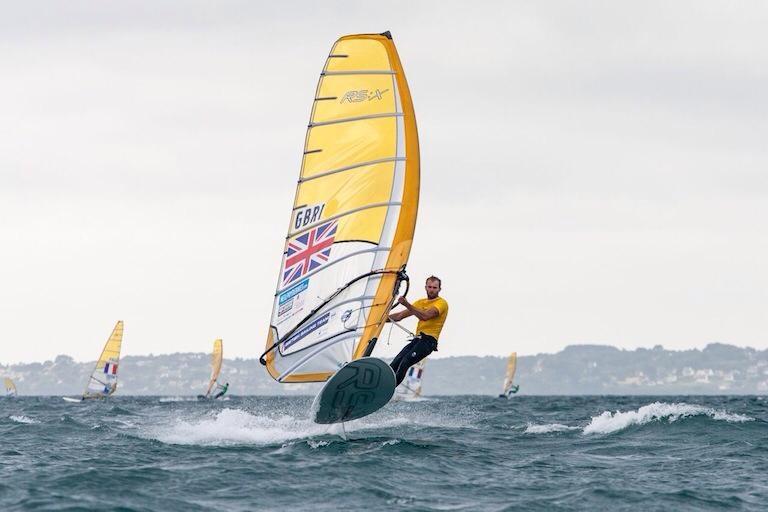You’ve got your RYA Start Windsurfing qualification in the bag or you may have simply just done a few sessions with an instructor mate who has taught you the basics.
But how do you make that transition from just knowing and understanding what the various bits of a windsurf board do and how they work to becoming an actual windsurfer?
It is all in the technique.
Tris Best has been a windsurfer for 22 years and since 2006 has run The OTC (Official Test Centre) the RYA affiliated windsurf training and kit testing centre based at the National Sailing Academy in Portland. He is good man for advice on improving technique.

“Windsurfing is a bit like school, when you learn chemistry, for example, up to GCSE and then you walk into your first A-level lesson and the teacher says ‘Forget everything you have been taught up to now, we are going to start again!’
“The very first things you learn in windsurfing are things you have to know to help you understand how the kit works and to give you confidence on the board. But once you start progressing from there some of those most basic things you actually need to do differently.
“For example, in a beginner’s initial training everyone’s taught to ease out with the back hand to stop being overpowered by the sail.
“But when you start to improve you actually want to harness that power, which is counter-intuitive to everything you have learned to that point.”
Tris believes there are a number of key factors to take into consideration in improving technique including mind-set, vision and making the most of time on the water.
Mind-set
“When you start out you don’t want to be overpowered, you want to be able to manage the sail so that you can simply experience getting going and learn turns, sailing upwind and tacking, progressing downwind and gybing.
“But if the instinct to always ease the sail out with the back hand to stop it becoming overpowered gets too ingrained it can actually hinder progression in stronger winds.
“When you start to plane that power is exactly what you want, so you have to stay sheeted in and resist the temptation to ease the back hand out. But that requires the sailor to have confidence and be prepared to go swimming, which all comes down to mind-set.
“You have to have a proactive mind-set to make the transition from beginner to intermediate level. We have all been catapulted into the water when we have been learning and if you have a willingness to accept that is going to happen then you can be more fearless.

“Windsurfing is not generally a sport people get injured doing either. In 22 years all I have only tweaked my medial knee ligament and broken my foot, and that was because someone came over a wave, not through the windsurfing itself. Every windsurfer has got a shin full of little nicks and scars but there really are very few big injuries in windsurfing, so be ballsy.
“Hold your nerve, pull your back hand in and harness the power in the sail. If the sail wants to pull you, lean back against the sail and counteract it. Fight against it.
“It totally transforms the impression you get of windsurfing when you experience this for the first time and you can take a massive leap in your windsurfing.”
Vision
“Anticipating and spotting the wind is one of the biggest things in improving but how can you spot breeze if you are looking at your hands and feet?
“As a beginner it is natural to be preoccupied about where your feet should be, what your hands should be doing, body position, direction etc, but you are not looking for wind then.
“Practice in light winds and non-planing conditions. After people have been windsurfing for a short while there can be a tendency to think they are now ‘too good’ for light winds. But go out in the light stuff and become so familiar with where your hands and feet should be on the board that you never have to look at them. Stop gear gazing!

“Your body learns the right position and the right stance so when you do then go out in a stronger breeze you only have to think about where the wind is and making the most of it.
“When the wind picks up, people’s stance can alter and there are some good exercises you can do to keep your stance in the right place.
“One good drill is to, on a beam reach, drag your front foot in the water and then drop down further so that your knee is in the water. Try to sail as far as possible doing this, keeping the power on and anticipating where the extra power might come from. You cannot look at your hands. If you get good then try to drop further so that your thigh is in the water!”
Time on the water
“You will only improve if you have got a willingness to learn so get out there and just sail. You can never sail too much and doing some of the things highlighted in the first two points will help you make the most of your time on water. You can make some big gains very fast.
“The beauty of windsurfing is it is one of those sports you can learn in very little time, but it takes years to master. Even after 22 years I am still learning all the time. That is captivating.”

The RYA offers windsurfing courses for complete beginners up to advanced level. To find out more check out RYA Training – Windsurfing courses
Love Windsurfing? Then why not join the association that promotes and protects, safe, successful and rewarding British windsurfing. Join today and support the RYA in protecting your rights and freedoms. Take advantage of free advice and support on a wide range of windsurfing topics; enjoy free third party insurance, as well as a fantastic range of personal member offers. Find out more by calling 0844 556 9556, email [email protected] or visit www.rya.org.uk





